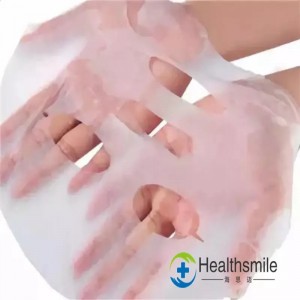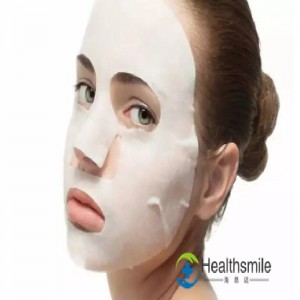Recently, the State Food and Drug Administration issued the Announcement on the Management Category of Medical sodium hyaluronate products (No. 103 in 2022, hereinafter referred to as No. 103 Announcement). The background and main contents of the revision of Announcement No. 103 are as follows:
I. Background of revision
In 2009, the former State Food and Drug Administration issued Notice on the Management Category of Medical Sodium hyaluronate Products (No. 81 of 2009, hereinafter referred to as Notice No. 81) to guide and regulate the registration and supervision of medical sodium hyaluronate (sodium hyaluronate) related products. With the rapid development of technology and industry and the emergence of new products, Announcement 81 can no longer fully meet the needs of the industry and regulation. Therefore, the State Food and Drug Administration organized the revision of No. 81 announcement.
Ii. Revision of the main contents
(a) At present, sodium hyaluronate (sodium hyaluronate) products are not only used in drugs and medical devices, but also often used in cosmetics, food and other fields, and some products are used at the edge of drugs, medical devices and cosmetics. In order to better guide the determination of management attributes and categories of related products, Notice No. 103 has added the management attribute definition principle of edge products and pharmaceutical device combination products involving sodium hyaluronate (sodium hyaluronate) and the related medical device product classification principle, and defined the management attribute and category of related products.
(2) Medical sodium hyaluronate products for the treatment of urinary bladder epithelial glucosamine protective layer defects have been approved for marketing as Class III medical devices. This kind of product is not approved in accordance with the situation of drug marketing, in order to maintain the continuity of management, continue to maintain the original management attributes.
(3) When the medical sodium hyaluronate product is used for injection into the dermis and below, and is used as an injection filling product to increase tissue volume, if the product does not contain pharmaceutical ingredients that play pharmacological, metabolic or immunological effects, it shall be administered as a Class III medical device; If the product contains local anesthetics and other drugs (such as lidocaine hydrochloride, amino acids, vitamins), it is judged to be a medical device-based combination product.
(4) When the medical sodium hyaluronate products are injected into the dermis to improve the skin condition mainly through the moisturizing and hydrating effects of sodium hyaluronate, if the products do not contain pharmaceutical ingredients that play pharmacological, metabolic or immunological effects, they shall be administered according to the third type of medical devices; If the product contains local anesthetics and other drugs (such as lidocaine hydrochloride, amino acids, vitamins, etc.), it is judged to be a medical device-based combination product.
(5) Notice No. 81 stipulates that “for the treatment of… Products with definite pharmacological effects such as skin ulcers shall be managed according to drug management “. However, with the development of science and technology and the deepening understanding of sodium hyaluronate, it is generally believed in the scientific research community that when sodium hyaluronate is used in medical dressings, high molecular weight sodium hyaluronate applied to skin wounds can adhere to the surface of skin wounds and absorb a large number of water molecules. To provide a wet healing environment for the wound surface, so as to facilitate the healing of the wound surface, the principle of its action is mainly physical. These products are regulated as medical devices in the United States and the European Union. Therefore, medical dressings specified in Bulletin 103 that contain sodium hyaluronate are regulated as medical devices if they do not contain pharmaceutical ingredients that have pharmacological, metabolic or immunological effects; If it can be partially or completely absorbed by the body or used for chronic wounds, it should be managed according to the third type of medical device. If it can not be absorbed by the body and is used for non-chronic wounds, it should be managed according to the second type of medical device.
(6) Since scar repair materials that assist in improving and preventing the formation of dermatologic rational scars have been listed in “Classification of Medical Devices” 14-12-02 Scar repair materials, they shall be managed according to Category II medical devices. When such products contain sodium hyaluronate, their management properties and management categories do not change.
(7) Sodium hyaluronate (sodium hyaluronate) is generally extracted from animal tissues or produced by microbial fermentation, which has certain potential risks. The safety and effectiveness of Category I medical devices cannot be guaranteed by regulatory measures. Therefore, the management category of medical sodium hyaluronate (sodium hyaluronate) products under the management of medical devices should not be lower than Category II.
(8) Sodium hyaluronate, as a moisturizing and hydrating ingredient, has been used in cosmetics. Products containing sodium hyaluronate that are applied to skin, hair, nails, lips and other human surfaces by rubbing, spraying or other similar methods for the purpose of cleaning, protecting, modifying or beautifying, and are not administered as drugs or medical devices. Such products should not be claimed for medical use.
(9) lotions, disinfectants and cotton pads containing disinfectants used only for the disinfection of damaged skin and wounds shall not be administered as drugs or medical devices.
(10) If the physical, chemical and biological properties of modified sodium hyaluronate are consistent with those of sodium hyaluronate after verification, the management attributes and management categories may be implemented by referring to this Announcement.
(11) In order to clarify the implementation requirements, the relevant matters of registration application under different circumstances are stipulated. For the situations involving the transformation of product management attributes or categories, the implementation transition period of about 2 years is given to ensure a smooth transition.
HEALTHSMILE will be strictly classified in accordance with national regulations. In line with the principle of being responsible for customers, Hyaluronate will continue to develop new products to promote skin health.
Post time: Nov-23-2022


